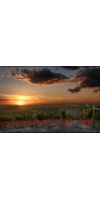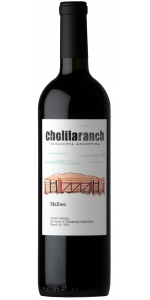Wine from Patagonia

Patagonia engulfs the tip of South America. The southern Patagonia region includes the fruit producing regions of Río Negro and Neuquén, which are considerably cooler than the major regions to the north. This provides a long growing season in the chalky soils of the area. Humberto Canale was responsible for importing vines into Patagonia in the first part of the 20th century. These cuttings came from Bordeaux establishing the first commercial winery in the Patagonia region. Today, the region continues to grow as producers continue to plant the cool climate vines like Pinot Noir, Malbec, Chardonnay, Torrontes, Riojano, and Semillon. Quite a few of the grapes that are sourced from the region are used for the sparkling wine industry in Argentina. Located more than 990 miles south of Mendoza, the vineyards of Bodega Weinert are noted as the southernmost-planted vineyards in South America. Phylloxera has never struck Argentina with some believing that the centuries old flood irrigation systems have deeply saturated the soil creating a high percentage of sand in the soil. Another reason may be Argentina’s isolation. The mountains, deserts, and oceans also protect the vineyards against the Phylloxera louse.
Named for the former Ranch owned by Butch Cassidy and the sundance Kid.
Cholila Ranch Malbec is made from 100% Malbec. The estate-grown grapes are manually harvested, carefully sorted, and destemmed. The wine undergoes traditional maceration for 21 days with selected yeasts. Cholila Ranch Malbec is aged both in American and French oak for 9 months, followed by a minimum of 6 months bottle aging prior to release.
Deep purple color. Aromas of ripe plum and mulberry with violet hints. Ripe black fruits and fig on the palate with touches of smoke and vanilla. A truly powerful yet balanced wine with a persistent finish.
- back
Selected Options
Regions
Categories
Pricing
Countries
Regions
Grape Types
Wineries
Organic/Free Shipping
Clos du Val Estate Cabernet Sauvignon is made from 6% Cabernet Sauvignon, 7% Merlot, 5% Malbec and 1% each Cabernet Franc and Petit Verdot.
This fresh and vibrant Napa Valley Cabernet Sauvignon is brimming with aromas of blackberry, mulberry, cassis, and violet. On the palate, bright flavors of cranberry, red plum, cherry, and lavender are intertwined with supple tannins, balanced acidity, and a long, smooth finish.
Review:
"Sleek tannins, guided by sweet earth, slate, purple plum and black olive. Savory notes of fig, toasted cedar, and black tea meld with blackberries. Well structured and impeccably balanced."
-Tasting Panel 96 Points
Pago de Carraovejas Cuesta Liebres is made from 100% Tinto Fino. The plot is located on a terraced hillside located at 900 m above sea level with slopes that range between inclines of 30% and 40%. Red cherry color with purple hues. Ripe fruit aromas, vanilla notes. Suave and unctuous in the mouth. A strong and noble character.
The harvest is carried out by hand using small crates and after passing through a refrigerated container it is transferred into tanks via gravity. The alcoholic and malolatic fermentation is carried out in small French “Haute Futaie” Oak casks with unique and original local yeasts and fermenting bacteria from the vineyard itself, to bring out the very best of the terroir, respecting the uniqueness of each and every vintage. Clarified with egg whites and bottled by gravity with natural cork stoppers.
Review:
"From the vineyard of the same name, the 2021 Cuesta De Las Liebres is a knockout, from a hillside vineyard of terraced vines. Aged 24 months in French oak, the first year in new, the second in second-use, all fine-grained, and bottled in June 2024, the tannins are well-integrated and dusty, nearly chalky. It’s truly a beautiful expression of variety, vintage, and site, reaching perfection in its fine-tuned, full-bodied layers of rich cassis, oak spice, and even a touch of garrigue. There’s lovely acidity throughout that brightens the palate, with beguiling notes of violet that never fade away. It’s a seamless, polished, gorgeous wine that will be hard to resist, though aging will continue to see it melt into one over the next 15-18 years. - Virginie BOONE"
- Jeb DUNNUCK (August 2025), 100 pts





